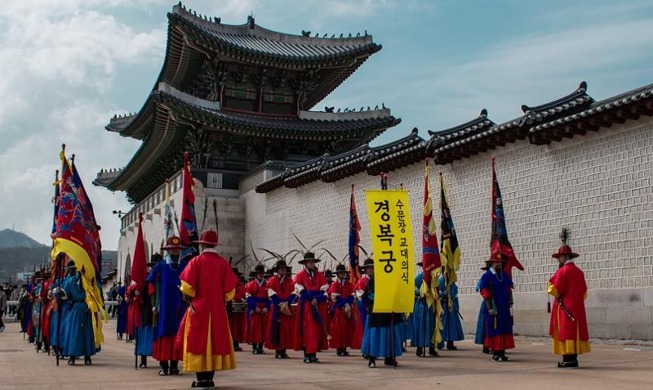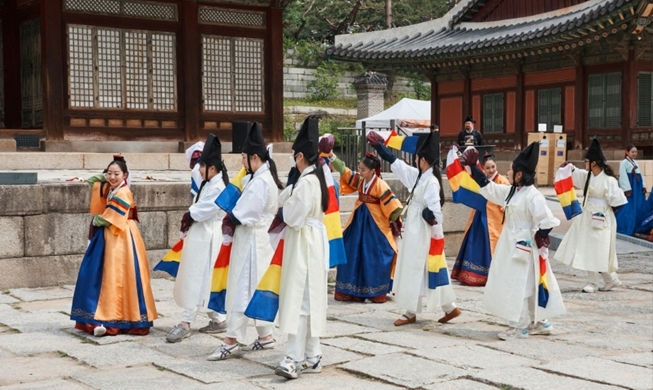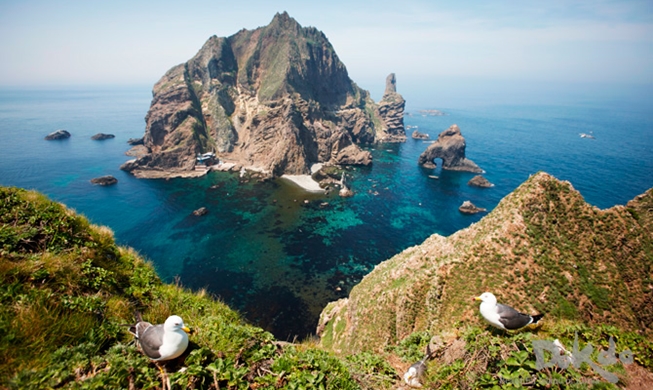-
 Korea.net's 24-hour YouTube channel
Korea.net's 24-hour YouTube channel- NEWS FOCUS
- ABOUT KOREA
- EVENTS
- RESOURCES
- GOVERNMENT
- ABOUT US
Neukdo Island is part of an archipelago of small islets with an area of a mere 0.32 square kilometers. What caught the journalist’s eyes was not anything about particular folk songs or games, but a collection of plain earthenware pottery with no discernible pattern or decoration. At that time, countless numbers of historic earthenware had been found with no pattern, relics that were rarely found in Busan but which were scattered all around the insular region of Neukdo: under walls, along the shoreline, across paddy fields, and just about everywhere.
The journalist brought his findings to the attention of the museum at the Pusan National University. After the museum put these relics under the microscope, it was revealed that among the pieces of pottery there were quite a number of craftworks from nearby countries, such as pieces from Iron Age Yayoi Japan (야요이 시대, 弥生時代) (300 B.C.-A.D. 250).
It was found that Neukdo Island served as an international trading port in the early Iron Age in Northeast Asia, roughly 600 B.C. to A.D. 400.
On July 19, the Jinju National Museum made public more than 1,000 craftworks excavated from around the island in a special exhibition to mark the 30th anniversary of their discovery. This ongoing exhibition brings back to life the history of trade among Northeast Asian nations, trade that revolved around the island. It also compares findings there to those excavated from the Harunotsuji (하루노쓰지, 原の辻) historic site on Iki Island (이키섬, 壱岐) on Kyushu, one of the main trading regions with Unified Silla, Baekje and Goguryeo, so as to provide a clear picture of marine trade patterns that were underway in those times across the region.
On exhibit are 168 artifacts on loan from the Ikikoku Museum, including 13 pieces designated as some of Japan's Important Cultural Assets.
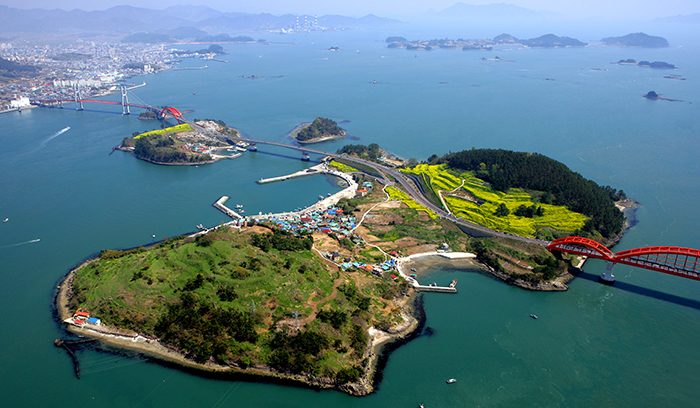
The colorful Neukdo Island is found along the southern coast of Korea. The small range of islets served as ports for trilateral trade patterns between ancient kingdoms in Korea, Japan and China some two thousand years ago.
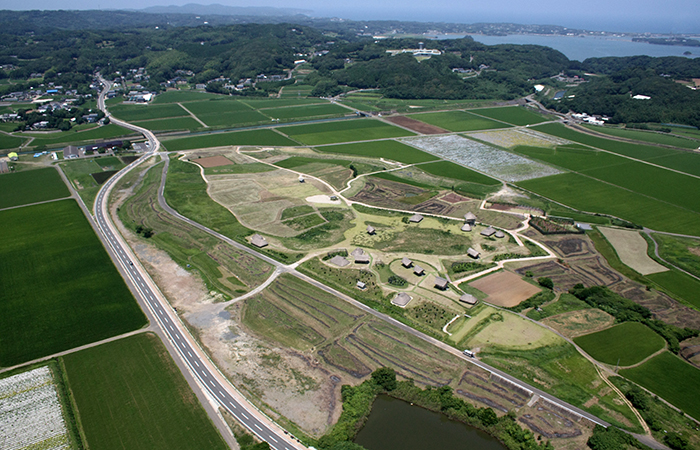
The Harunotsuji historic site is found on Iki Island on Kyushu.
The exhibition consists of three sections. The first section, “Pioneer a Sea Route,” chronicles the history of the port on Neukdo, showing how trade between ancient kingdoms in Northeast Asia started through the natural and geographical environments that helped the island become an important trading port. On display are relics found in Manggok-ri in Changwon and Hoegyeon-ri in Gimhae, both near the island, which were part of trade routes before the port on Neukdo Island began to grow. This section of the exhibit also shows the natural environment that existed on Neukdo and Iki islands during ancient times, based on ecological data, helping museum-goers get a better understanding of the physical geography of the islands at that time.
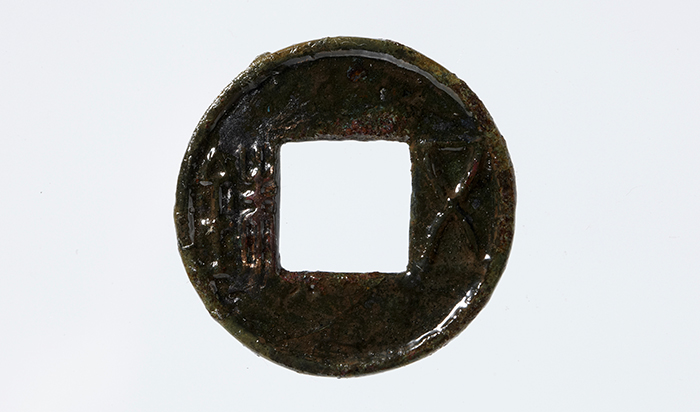
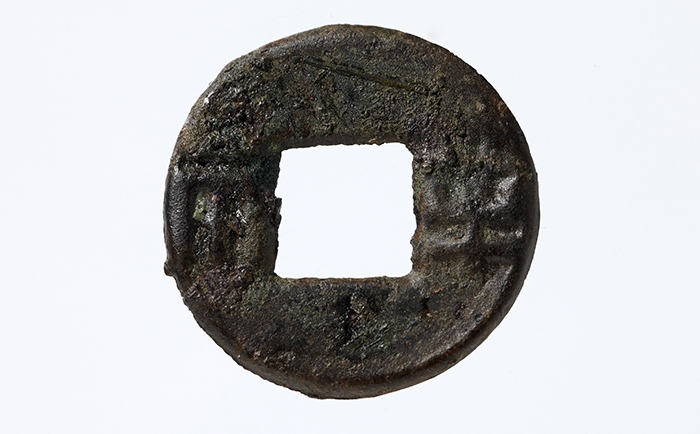
The osujeon (五銖錢) (top) and banryangjeon (半兩錢) (bottom) are both found on Neukdo Island and are ancient coins minted during the Han Dynasty (206 B.C.-A.D. 220). These kinds of coin have been found all across the Korean Peninsula.
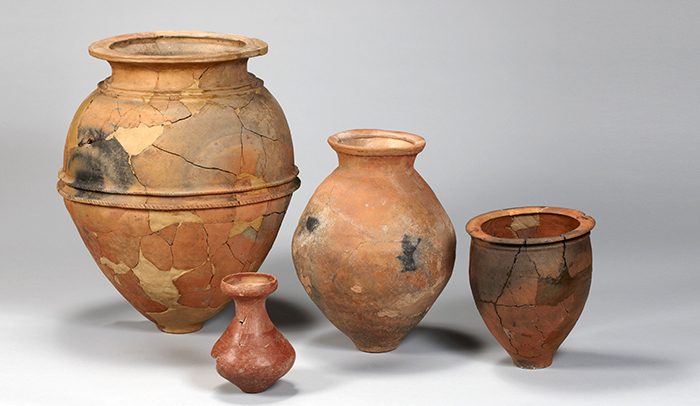
Earthen artifacts discovered on Neukdo Island date back to Yayoi Japan (300 B.C.-A.D. 250). Their discovery suggests that there used to be active trade going on between Unified Silla, Goguryeo, Baekje and Yayoi.
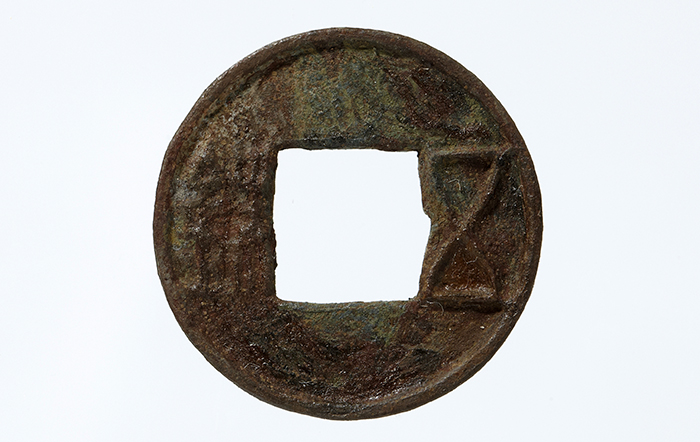
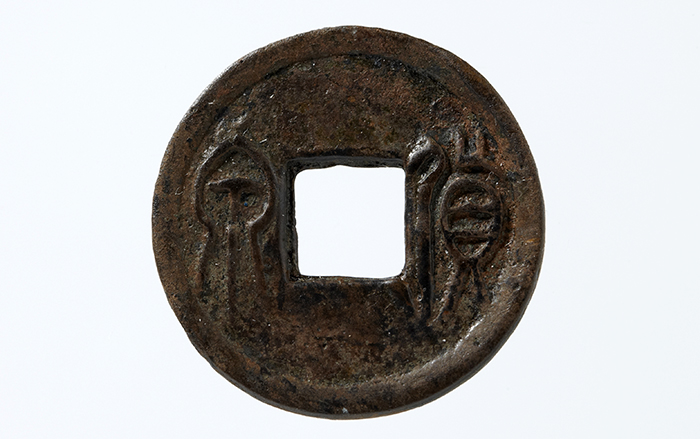
The osujeon (top) and hwacheon (貨泉) coins were both minted during the Xin Dynasty (A.D. 9-23) in ancient China during the reign of Wang Mang (왕망, 王莽) (r. 9-23). They were unearthed at the Harunotsuji historic site on Iki Island on Kyushu. Their discovery suggests that Xin coins were widely used in ancient kingdoms on both the Korean Peninsula and Japanese Archipelago.
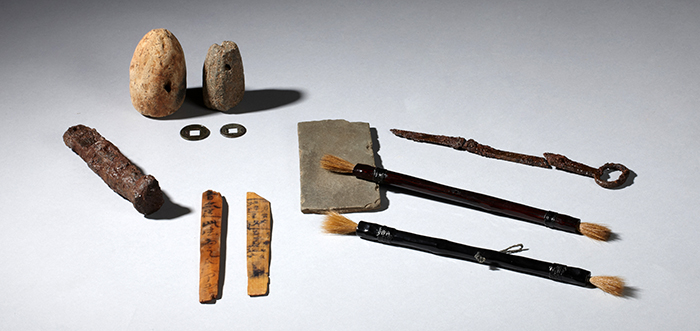
A series of wooden tablets and brushes discovered on Neukdo Island are believed to have been used to record trading activities among Korea, Japan and China.
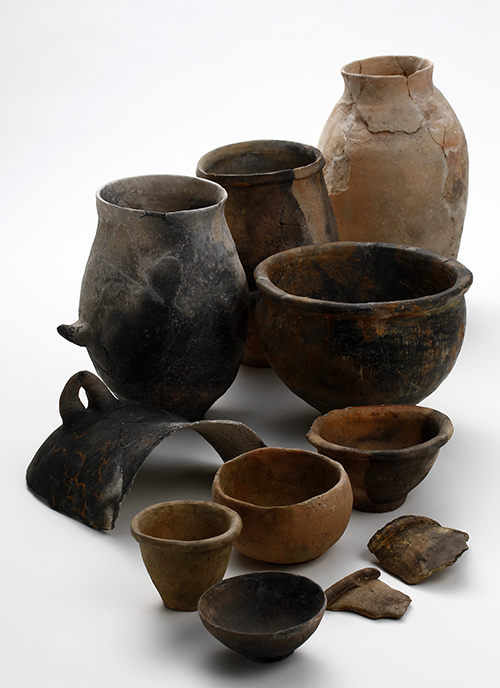
Ancient earthenware found in Japan has a distinctive Korean look and shape to it.
The second section of the exhibit, “Stand in the Center of the Sea Route,” focuses on the formation of trading activities along the east coast of the Korean Peninsula. It puts under the spotlight docks and civil engineering techniques that developed on Iki Island, as well as the shape of vessels coming in and out of Neukdo Island, and likely lifestyles for the people who lived near the island. Exhibits on display here include ancient Chinese artifacts that were excavated on Neukdo and Iki islands, including Nakrang pottery, a bronze mirror, known as a donggyeong (동경, 銅鏡), and a bronze dagger, known as a donggeom (동검, 銅劍). These all attest to the role the two islands played as key strongholds of commerce between the ancient kingdoms of Northeast Asia.
There are many more traces of transactions that went on between ancient peoples, such as weights for scales made of various materials, coins and inkstones, too. This section of the exhibit illustrates the likely sea route through which a variety of items were traded across the waters of ancient Northeast Asia, from the Japanese Archipelago, across the coast of the Korean Peninsula and, finally, to coastal China.
The final and third section of the exhibit, “Good Luck to the Sea Route,” gives a glimpse into the rituals and customs that were performed by people who lived on the seaside in ancient times, focusing on burial rites and other traditions.
By Wi Tack-whan, Sohn JiAe
Korea.net Staff Writers
Photos: Jinju National Museum
whan23@korea.kr
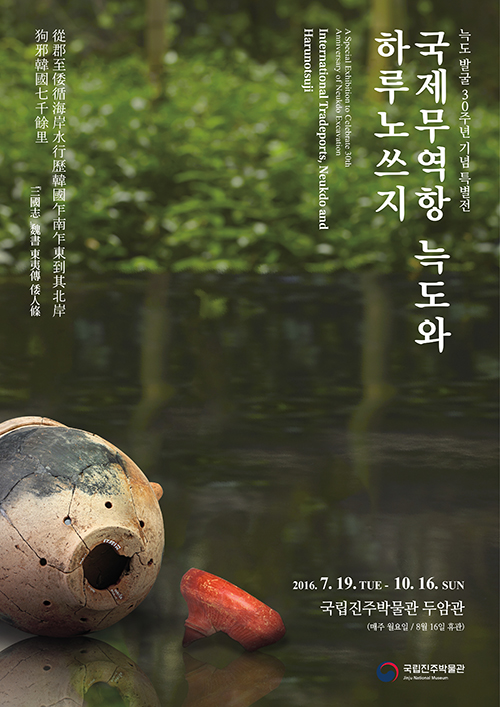
The Jinju National Museum hosts a special exhibition that focuses on relics excavated on Neukdo Island in Gyeongsangnam-do Province. It runs until Oct. 16.




